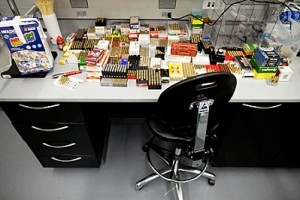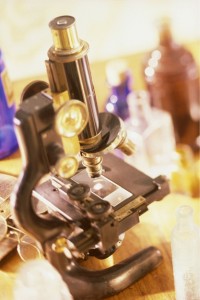
Firearms analysts keep a reference library of bullets to match bullets recovered from crime scenes. Source: Katye Martens/Stateline. (Stateline is a nonpartisan, nonprofit news service of the Pew Center on the States that provides daily reporting and analysis on trends in state policy.)
On November 27, the Pew Center on the States website posted Maggie Clark’s article, “D.C. Crime Lab: An Experiment in Forensic Science.” The new crime lab reflects many of the recommendations from the National Academy of Sciences’ 2009 report on the state of forensic science. For example, the lab is staffed only with civilian scientists.
Many jurisdictions have crime labs tied to the local prosecutor’s office or police department. D.C. Council member Phil Mendelson told Clark that close connections between crime labs and police can expose labs to harsh criticism. “If the crime lab is within the police department,” Mendelson said, “defense attorneys could say to an analyst, ‘well, you work for law enforcement, you’re just proving the police officer’s case.’ It’s better for the justice system when forensic analysis is done by a separate agency.” The D.C. lab is an independent lab; its director answers to the Deputy Mayor for Public Safety.
Dr. Max Houck, director of the D.C. Department of Forensic Science, said that D.C.’s civilian-led crime lab can lead the way to similar changes in other U.S. crime labs.
“We need a national strategy on forensic science,” Houck said. “Here, we are running the agency as a science-based organization and as a peer with other agencies like the medical examiner or law enforcement with the focus really being on the science.”
A science-based crime lab operating independently of a police department is not a new idea. In 1914, Sir Lomer Gouin, premier of Quebec, announced the establishment of the Laboratoire de Recherches Medico-Legales. It was the first forensic lab in North America.



